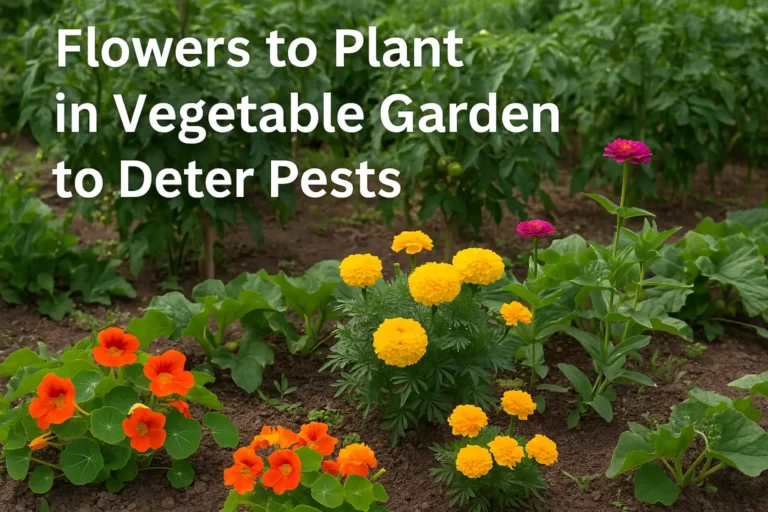
Celebrate Earth Day 2025 With a Sustainable Victory Garden: Modern Food Security in Your Backyard
Summary of this article
Spring 2025: The Perfect Time for Your Earth-Friendly Victory Garden
Mid-April marks a crucial transition period for American gardeners. With late frosts receding across most regions and soil temperatures steadily rising, conditions are ideal for establishing an environmentally responsible vegetable garden.
With Earth Day 2025 just around the corner (April 22nd), there’s no better moment to reimagine our gardening practices with sustainability at the forefront.
The concept of “victory gardens” originated during World Wars I and II when Americans were encouraged to grow food at home to support the war effort. Today, these personal food plots represent a different kind of victory – one over food insecurity, excessive carbon footprints, and disconnection from our food sources.
“A well-planned spring garden doesn’t just produce food – it creates habitat, builds soil health, and connects us to natural cycles,” says my experience after 15+ years of organic gardening across various climate zones.
The timing couldn’t be better as Americans increasingly search for ways to combine environmental consciousness with practical skills.
Creating Your Sustainable Spring Garden: Key Steps for Earth Day 2025
1. Soil Preparation with an Earth-First Approach
The foundation of any successful garden begins with healthy soil. Rather than turning to commercial fertilizers that often contain synthetic chemicals:
- Incorporate homemade compost to improve soil structure and add nutrients
- Consider a soil test to understand your specific soil needs
- Add organic matter like leaf mold or well-rotted manure
- Minimize tilling to protect soil microbiology and reduce carbon release
Healthy soil doesn’t just grow better plants – it sequesters carbon and helps mitigate climate change, making it the perfect Earth Day focus.
2. Strategic Plant Selection for Food Security
When choosing what to grow this spring:
- Focus on high-yield vegetables that store well: potatoes, onions, carrots
- Include fast-growing crops for immediate harvest: radishes, lettuce, spinach
- Plant calorie-dense foods like beans and sweet potatoes
- Incorporate native edible plants that thrive with minimal intervention
This diverse approach ensures a steady food supply while supporting local ecosystems.
3. Water Conservation Techniques
With changing climate patterns affecting rainfall across many regions:
- Install rain barrels to capture spring showers
- Apply mulch generously to retain soil moisture
- Consider drip irrigation for efficient water delivery
- Group plants with similar water needs together
- Create swales or rain gardens to maximize natural water use
These approaches reduce your environmental impact while building resilience against unpredictable weather patterns.
4. Natural Pest Management Solutions
Rather than reaching for chemical pesticides:
- Encourage beneficial insects by planting flowers like marigolds and zinnias
- Practice companion planting (basil near tomatoes, nasturtiums near cucumbers)
- Use physical barriers like row covers for vulnerable crops
- Make homemade pest deterrents from garlic, hot peppers, or neem oil
- Accept some level of damage as part of a balanced ecosystem
This holistic approach keeps your garden productive while maintaining biodiversity.
Making Your Garden Part of the Earth Day Movement
Your spring garden can be more than just a food source – it can become an active part of environmental regeneration:
- Create habitat spaces for pollinators and beneficial wildlife
- Save seeds to preserve genetic diversity and adapt plants to your local conditions
- Share excess produce with neighbors or community food banks
- Compost all garden waste to close the nutrient loop
- Document your garden’s growth to inspire others on social media
“The most revolutionary thing you can do is grow your own food,” as the saying goes. In 2025, with global supply chains still recovering from recent disruptions, this statement carries even more weight.
Looking Beyond Earth Day: The Season-Long Approach
While Earth Day provides excellent motivation to start your sustainable garden, the true benefits come from season-long commitment:
- Succession planting ensures continuous harvests through summer and fall
- Season extension techniques like cold frames can prolong your growing season
- Preservation methods (canning, freezing, drying) maximize your garden’s impact
- Cover cropping in late fall builds soil for next season
- Fall leaf collection provides free organic matter for composting
By thinking beyond a single planting season, your garden becomes a regenerative system that improves year after year.
As you dig your hands into the soil this Earth Day 2025, remember that you’re joining millions of Americans rediscovering the satisfaction of growing their own food while making a positive environmental impact.
Whether you have acres of land or just a few containers on a balcony, every plant grown sustainably contributes to a healthier planet and greater food security.



Laisser votre commentaire